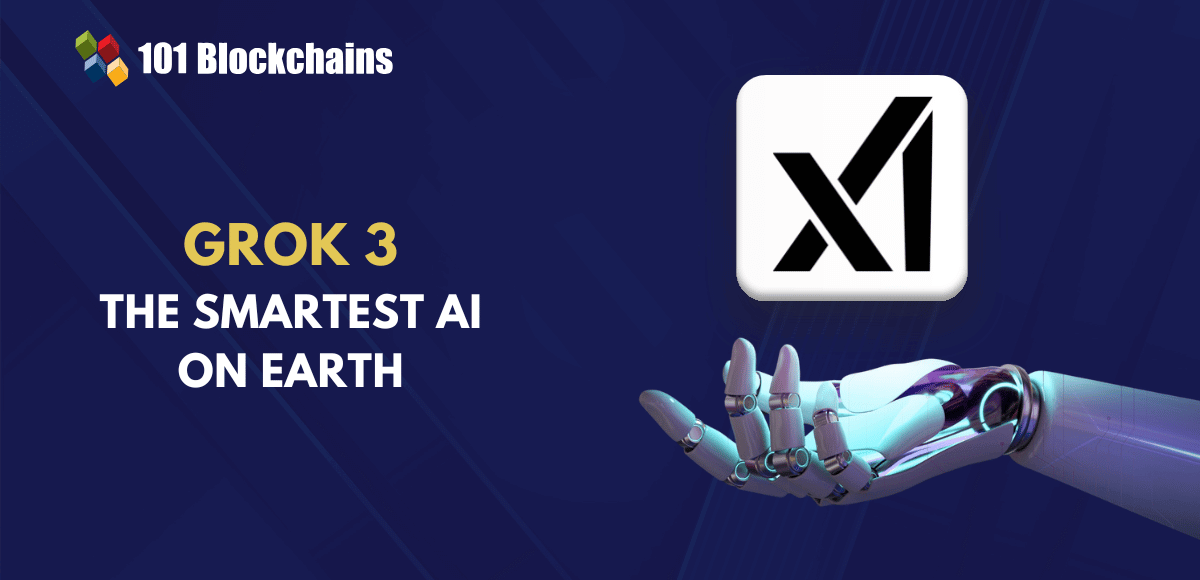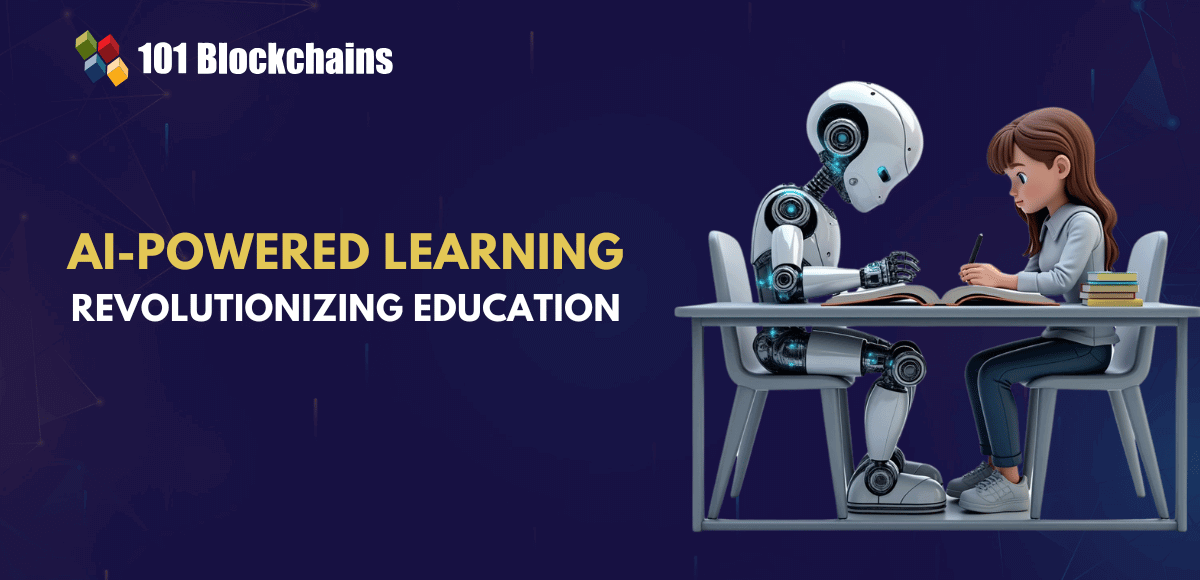Learn how blockchain truly works, master key definitions, and uncover what makes smart contracts so "smart." Dive into the fundamentals, gain valuable insights, and start your blockchain journey today!

AI & ChatGPT
Georgia Weston
on September 29, 2023
What is Deep Learning, and How Does It Work?
Artificial intelligence and machine learning have emerged as the major milestones in transforming the computing landscape. The technologies help recognize patterns in massive datasets, followed by using historical data to predict future outcomes. However, the vision for creating ‘smart’ machines would rely on the ability of computer systems to learn independently without intervention. At this point of time, a deep learning tutorial becomes an important necessity as it helps in understanding the approaches for the simulation of human intelligence in machines through neural networks.
Most of you might be wondering about the definition of deep learning and how neural networks work. The following post offers you a detailed introduction to deep learning and its working mechanisms alongside use cases.
Definition of Deep Learning
Deep learning is a subset of artificial intelligence like machine learning. The answers to ‘what is deep learning’ can offer you the foundation-level knowledge required for understanding the value of deep learning. It works by imitating the ways followed by humans to gain knowledge.
Deep learning models are trained for performing classification tasks and recognizing patterns in different data types, such as audio, text, and image files. On top of it, deep learning models can also help in the automation of tasks, which traditionally required human intelligence. For example, deep learning is useful for the transcription of audio files or for describing images.
One of the interesting highlights in the fundamentals of deep learning explained for beginners would showcase the relationship between data science and deep learning. Deep learning can help data scientists collect, analyze, and interpret large volumes of data with simplicity and ease. You must know that human brains have millions of neurons connected to each other and help in learning information.
Deep learning follows the same approach and utilizes neural networks as an alternative to the network of neurons. The neural networks are created with multiple layers of nodes that work in unison to achieve the desired objectives. The training process of deep learning models involves large collections of labeled data alongside neural network architectures. You can refer to deep learning examples to identify how deep learning could help computers in learning by example. For instance, a model would learn by classifying objects to differentiate one object from another. Gradually, the model would learn about the features of the object and develops clarity regarding complex abstractions.
Excited to learn about ChatGPT and other AI use cases? Enroll now in ChatGPT Fundamentals Course
Working Mechanism of Deep Learning
Deep learning works through continuous learning. The answers for ‘How does deep learning work’ would focus on the multiple layers of interconnected nodes in deep learning. Every layer builds on the last layer for refining and optimizing the predictions alongside classification tasks.
Deep learning models implement non-linear transformations for the input values and uses the inferences for developing the statistical model as the output. The process would continue in an iterative manner until the output achieves the desired accuracy level. Since the data in deep learning algorithms must pass through different processing layers, the term ‘deep’ fits perfectly for them.
In the case of conventional machine learning, the models are trained through supervised learning. Furthermore, the programmer should offer specific instructions to the computer about the things it should look for in input data. The process is known as feature extraction, and the computer system’s success rate depends on the programmer’s ability to define feature sets. With deep learning models, the program would develop the feature set independently without any intervention or supervision.
The first step in training deep learning algorithms involves the facility of training data. Let us reflect on the working of deep learning for learning whether images contain the photo of dogs or not. The input data in this example would include a collection of images featuring metatags for easier classification.
The program utilizes the information from training data to create a feature set for dogs and developing a predictive model. In the first stage, the model could predict that any object in the image with four legs and a tail could be classified as a dog. Over the course of time, the model would search for patterns of pixels in the input data without any labels. As the iteration continues, the predictive model will achieve better accuracy and become more complex.
Take your first step towards learning about artificial intelligence through AI Flashcards
How is Deep Learning Different?
Compared to machine learning or humans, deep learning algorithms could accurately present predictions within a few minutes. You can improve the deep learning workflow by introducing massive volumes of training data into the equation. At the same time, it is also important to note that deep learning utilizes massive amounts of computing power.
The arrival of big data and cloud computing provided the two essential requirements for growth of deep learning. Another distinct highlight of deep learning is the fact that it creates complex statistical models from its iterative output. As a result, deep learning algorithms could develop more accurate predictive models by utilizing large amounts of unstructured and unlabeled data.
Learn the fundamentals of AI applications in business use cases with AI For Business Course
What are the Different Types of Methods for Deep Learning?
The working mechanisms of deep learning and its distinct highlights showcase that it has the potential to introduce revolutionary changes in computing. Interestingly, the answers for ‘what is deep learning’ do not emphasize the types of deep learning methods for creating strong models. Here is an outline of some of the notable techniques employed in deep learning.
-
Transfer Learning
Transfer learning is one of the most common methods for training deep learning models. The transfer learning process focuses on improving a model which has been trained already. At the same time, the process would need an interface to the internals in a pre-trained network. The first step involves feeding new data to the existing network.
The new data must feature classifications that are previously unknown to the network. After introducing the necessary modifications in the network, the network can help in performing new tasks with better specificity in its classification abilities. The transfer learning method for deep learning ensures lesser data consumption as compared to others, thereby reducing the computation time.
-
Dropout
The next addition among the methods for deep learning explained for beginners would point at the dropout. It focuses on resolving the concerns of overfitting in networks that have many parameters. The dropout method involves randomly excluding units alongside their connections to the neural network in the training process. The dropout method could help increase the performance of neural networks compared to supervised learning for different tasks. For example, dropout could help in offering better results in computational biology, speech recognition, and document classification.
Want to understand the importance of ethics in AI, ethical frameworks, principles, and challenges? Enroll now in Ethics Of Artificial Intelligence (AI) Course
-
Learning Rate Decay
The learning rate is an important parameter in the training process for deep learning models. It helps in defining the system alongside the set of conditions for its operations before the learning process. As a result, the learning rate could exercise the model changes due to estimated error for every instance of modifying model weights.
The learning rate decay method is one of the notable aspects in responses to ‘how does deep learning work’ as it helps in increasing performance. Higher learning rates could lead to unstable training processes or learning with a suboptimal collection of weights. On the other hand, smaller learning rates could lead to lengthy training processes, which are more likely to experience downtime.
The learning rate decay or adaptive learning rate method involves adapting the learning rate to reduce training time alongside increasing performance. You can find the most common and simplest adaptations of the learning rate in the training process with techniques that help in reducing the learning rate with time.
-
Training from Scratch
Another notable entry among methods for training deep learning models is training from scratch. The method is an important addition in every deep learning tutorial and involves the collection of large labeled datasets.
It also involves the configuration of network architecture for learning the features and specification of the desired model. The training from scratch technique is applicable in the case of new applications as well as applications with different output categories. However, the training process with such methods could take days or weeks as it needs massive data.
Want to learn about the fundamentals of AI and Fintech? Enroll now in AI And Fintech Masterclass
What are Neural Networks in Deep Learning?
Artificial Neural Networks or ANNs are a variant of advanced machine learning algorithm that defines the foundations of the majority of deep learning models. Therefore, deep learning has also been classified as deep neural networks or deep neural learning.
The working of deep learning depends on neural networks as they help in avoiding the need for programming. The Deep learning networks include three layers: the input layer, the output layer, and the hidden layer. Each layer of the neural network serves a distinct functionality for deep learning.
Input layers serve as the layer for placing input data. You can find different variations in a number of output layers and nodes according to the desired output. For example, you would need only two nodes in the deep learning workflow for yes/no outputs. On the other hand, outputs with additional information would need more nodes. The final layer, i.e., the hidden layer, serves as the intermediary layer, which works on processing data and transferring it to different layers in the network.
You can come across different types of neural networks, such as recurrent neural networks, forward neural networks, and convolutional networks. Every neural network offers the assurance of benefits in specific use cases. At the same time, all the neural networks follow a similar approach in their working mechanisms.
All of them feed data and wait for the model to determine whether they have made the right decision for a specific data element. The outline of responses for ‘what is deep learning’ would be incomplete without referring to the trial-and-error approach for training.
Neural networks rely on the trial-and-error method, thereby implying the requirement of massive volumes of data for training. You must also note that neural networks gained significant popularity after businesses adopted big data analytics and collected large volumes of data.
The fundamental concepts of deep learning explained the importance of neural networks, albeit without referring to the type of data required for training. Which type of data is ideal for neural networks? You must note that the first few iterations of the deep learning model involve guesses.
Therefore, the training process must use labeled data to help the model determine the accuracy of its responses. Unstructured data is suitable for a deep learning model only after training and achieving a specific level of accuracy.
Aspiring to become a certified AI professional? Read here for a detailed guide on How To Become A Certified AI Professional now!
Use Cases of Deep Learning
The final highlight in a deep learning tutorial would obviously draw the limelight toward use cases of deep learning. Some of the notable use cases of deep learning include speech recognition software, image recognition tools, and natural language processing applications. Deep learning has found the perfect place in different variants of big data analytics applications, such as stock market trading signals, medical diagnosis, and network security.
The use cases of deep learning have helped in fostering industrial automation to improve worker safety in warehouses and factories. In addition, deep learning models have successfully empowered chatbots to improve customer experience.
Most important of all, the working of deep learning has supported massive improvements in computer vision. As a result, computer vision systems could enable computers to achieve better accuracy in object detection alongside image classification, segmentation, and restoration.
Develop expert-level skills in prompt engineering with the Prompt Engineer Career Path
Conclusion
The introduction to deep learning explained that AI could actually achieve the vision of creating ‘smart’ machines. Deep learning enables computer systems to learn independently without relying on explicit instructions through programming.
The deep learning tutorial also reflected on the different methods for training deep learning models, such as transfer learning and learning rate decay. Furthermore, you could also notice how neural networks play a distinctive role in expanding the deep learning ecosystem. The use cases of deep learning also showcase the potential for the adoption of deep learning in different industries.
However, it is also important to learn about the notable challenges and examples of deep learning in practice. Find the best resources to learn more about deep learning and its role in the expansion of the AI movement right now.






